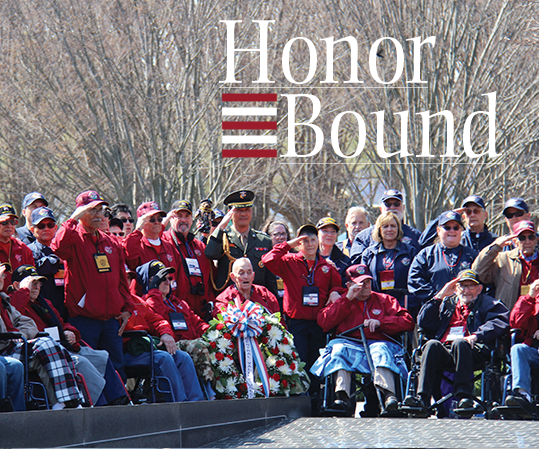Death is one of the hardest aspects of life, and it can be especially difficult for children to deal with. Many of the feelings attached to the loss of a family member—isolation, anger, confusion, grief—tend to overwhelm even the most stable person, so when the one trying to process those emotions isn’t mentally developed enough to analyze those feelings, they need support.
That’s where Camp Erin comes in.
They take on the challenge of helping kids express themselves and handle their loss with peers who are going through the same thing.
Started in 2000 by Jamie Moyer, the retired 25-year MLB veteran and recipient of the Roberto Clemente award for sportsmanship and community advocacy, the Moyer Foundation is responsible for the birth of Camp Erin.
The camp, which had its first outing in August 2014, is supported by the foundation as well as Community Hospice, a non-profit agency that offers education and care to terminally ill patients and provides complimentary grief support in the community.
Even though the Moyer Foundation and Community Hospice are involved with the camp, all of the funding comes from generous donations, which enables the children, whose ages range from 6-17, to attend the camp free of charge.
Once an application is filled out, there is an in-person interview with the child’s guardian to see if they would be a good fit for the three-day program.
The evaluation takes into account behavior, openness, and the desire to want a hand to guide them through the grieving process.
C. Desha McLeod, president and CEO of Community Hospice, said that “it takes a village” to make it all possible, but “we strengthen each other so we can take care of the kids.”
Their volunteers are well-trained and, like the children, undergo a rigorous screening process to determine if they possess qualities that will enable them to be a steadfast presence at camp.
If approved, then they will head out with the hundred or so campers to Foothill Horizons in Sonora, Camp Erin’s home.
Before the charter bus departs for Sonora, there is a small ceremony in which silicone bracelets are exchanged between the kids and their parents or family member. The child hands one to the adult and says, “I’ll be okay.” The adult returns the favor, gives their bracelet, and tells them “Don’t worry about me.”
This moment allows the children to part ways with the understanding that they will both be mourning in their own way.
Sometimes kids can drown in the adult’s sorrow during a loss, but at Camp Erin it is vital to let them be themselves and navigate the emotional labyrinth that follows death without the added weight of a grieving guardian.
While at Foothill Horizons, the kids are separated by age and gender. HUG (Help Understand Grief) is for ages 6-9. TWIG (Tweens Working in Grief) is 10-12, and TAG (Talk About Grief) is teens from 13-17.
There is a multitude of activities available for the campers, which both address their feelings and provide an outlet to escape from them.
One of the first things the kids do when they arrive is put a picture of their family member on what is called the memory board.
The pictures help them remember their loved ones and assists in forming bonds with each other. When camp is over, they will gather around the board and share stories.
“One of the realest things is to sit back and watch them interact,” says McLeod. “We want them to know it’s okay to cry.”
Kristin Mostowski, public relations director for Community Hospice, knows that Camp Erin is providing these children and teens with a unique experience that a lot of others in their situation don’t have.
“They can express grief for the first time with peers who have been in the same situation,” she says. “It gives them the opportunity to say goodbye.” Camp Erin “provides tools to grow, keep living life, and reinvest in the community.”
But it isn’t all tears and maudlin moments.
What camp would be complete without outdoor activities? There’s swimming, rock climbing, archery, and other active enterprises to balance out the emotionally heavy portions of the excursion.
It’s astounding to know that 1 in 5 kids will lose someone in their family before they reach the age of 18, so to have a bereavement program that can try to guide them all the way to the acceptance stage is something special.
And even when the trip is over, the healing doesn’t end. No death can be dealt with in three days, but Camp Erin makes remarkable strides in helping to begin that process.
They even follow up with the kids after they return home, connecting through the schools, holding additional grief programs, individual counseling, and giving support where it is needed.
“We do this for the kids,” McLeod says. “If we can affect one child, it’s all worth it.”
For more information about Camp Erin, visit:





